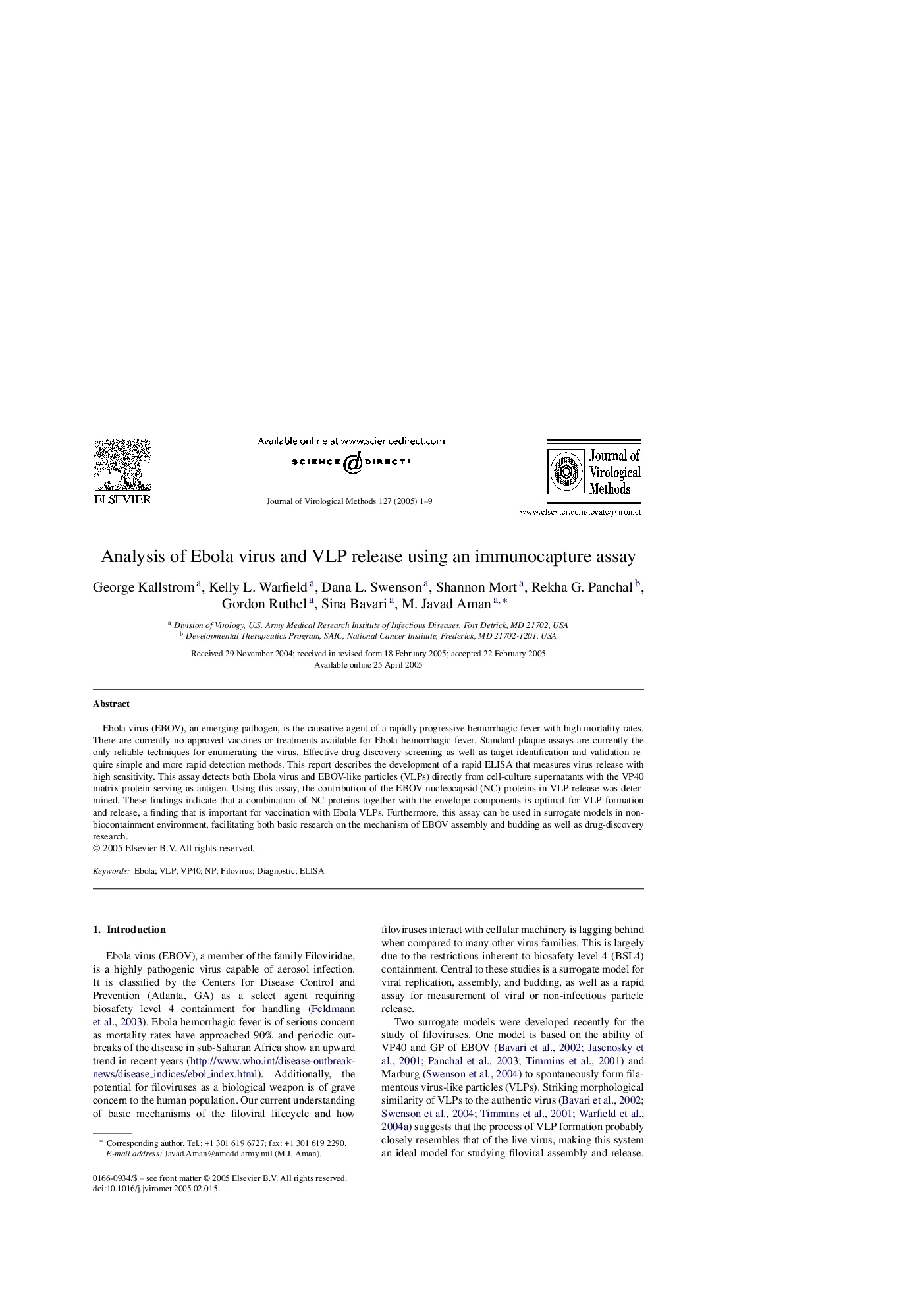| Article ID | Journal | Published Year | Pages | File Type |
|---|---|---|---|---|
| 9279436 | Journal of Virological Methods | 2005 | 9 Pages |
Abstract
Ebola virus (EBOV), an emerging pathogen, is the causative agent of a rapidly progressive hemorrhagic fever with high mortality rates. There are currently no approved vaccines or treatments available for Ebola hemorrhagic fever. Standard plaque assays are currently the only reliable techniques for enumerating the virus. Effective drug-discovery screening as well as target identification and validation require simple and more rapid detection methods. This report describes the development of a rapid ELISA that measures virus release with high sensitivity. This assay detects both Ebola virus and EBOV-like particles (VLPs) directly from cell-culture supernatants with the VP40 matrix protein serving as antigen. Using this assay, the contribution of the EBOV nucleocapsid (NC) proteins in VLP release was determined. These findings indicate that a combination of NC proteins together with the envelope components is optimal for VLP formation and release, a finding that is important for vaccination with Ebola VLPs. Furthermore, this assay can be used in surrogate models in non-biocontainment environment, facilitating both basic research on the mechanism of EBOV assembly and budding as well as drug-discovery research.
Related Topics
Life Sciences
Immunology and Microbiology
Virology
Authors
George Kallstrom, Kelly L. Warfield, Dana L. Swenson, Shannon Mort, Rekha G. Panchal, Gordon Ruthel, Sina Bavari, M. Javad Aman,
